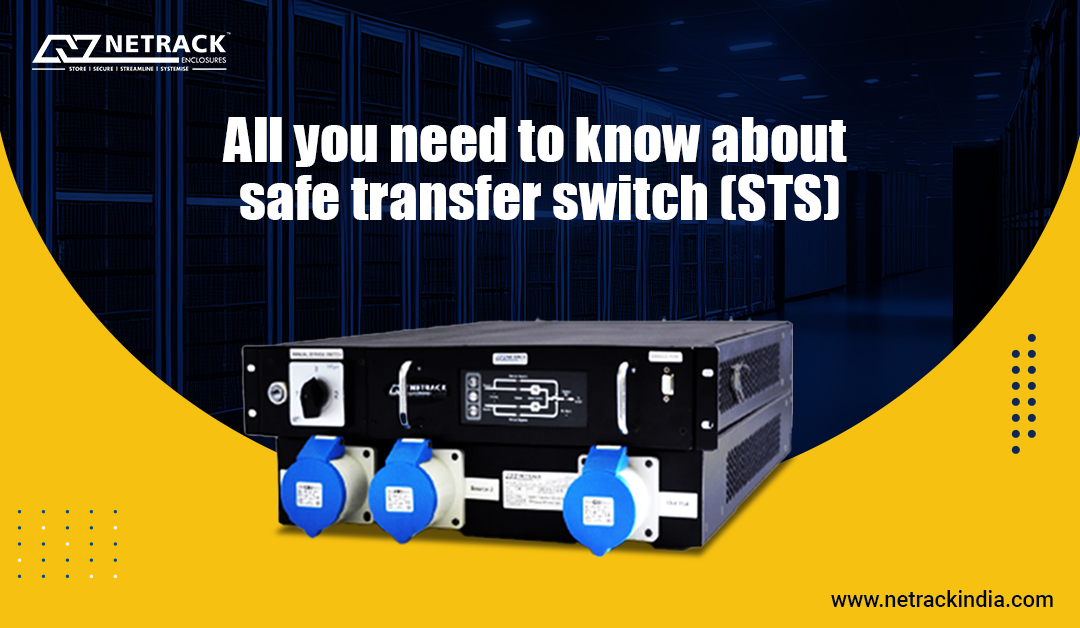
All you need to know about safe transfer switch (STS)
Data centers require an uninterrupted electricity supply for the electronic devices it hosts to function correctly. A power surge or any power outage can damage the equipment and cripple the overall functioning of the data center. Hence, modern data centers are empowered with dual power sources for consistent power supply to mitigate such risks. Further, to make the process smooth for efficient business continuity, a safe transfer switch (STS) is designed to cater to any single power source within the system.
Understanding STS
An STS is an electrical device that switches the supply of power from one source to another, such as switching from a utility power supply to a backup generator during a power outage. The STS ensures the power transfer is done safely and efficiently without interrupting the power supply. It can be done either manually or automatically when the device senses the power outage and automatically transfers the power supply from the primary to a backup source. This switch is installed between the primary power source, such as the utility power supply, and the backup power source, such as a generator.
Netrack designed the STS using thyristor-based reliable technology to take two inputs for two diverse sources and provide a single output. This single power output can then be connected to the rack power distribution units for efficient functioning. It can also be used in high-power switching applications since it ensures an uninterrupted power supply with instantaneous load reconversion to the primary input power. Netrack’s STS is equipped with a control panel that captures data and has indicators to alert any fault in the system. In addition, it provides information on power sources and the lowest switching time of 5ms.
How does an STS work?
The STS continuously monitors both the primary power source and the backup power source. When it detects a power outage, it switches the power supply from the primary source to the backup source within a few milliseconds. The transfer is seamless and automatic, ensuring no interruption to the power supply.
STS features overview
- Creates power redundancy for single power source devices
- Less transition-time
- Provides standard switching time of ≤ 5ms
- Equipped with two input sources and one output source
- Available in a single phase with two variants of 16A and 32A
- Compatible with existing power distribution units as the output is IEC 60309 socket
- Manual bypass capability during maintenance activity
- User interface with displays of fault indication
- 98% efficiency even at full load
- Rack-mountable
- Voltage tolerance of +/- 15%
- Frequency tolerance of 40 to 70 Hz
Benefits of STS
Considering the above-mentioned features, an STS offers several benefits to boost business productivity.
Seamless transfer
With an STS, the power transfer from the primary to the backup source is seamless and automatic. This ensures that there is no interruption to the power supply, which is essential in critical applications such as hospitals, data centers, and other facilities that require uninterrupted power.
Protection
An STS protects the electrical equipment from power surges and voltage fluctuations during power transfer. This ensures that the equipment is not damaged and there is no data loss or downtime.
Efficiency
An STS ensures the power transfer is done efficiently, without any power wastage. This is important, especially in applications where power consumption is critical, such as data centers.
Cost-effective
An STS is a cost-effective solution for providing backup power. It minimizes the need for manual switching between the primary and backup sources, which can be time-consuming and expensive.
Why do you need STS?
An STS protects the electrical equipment from power surges and voltage fluctuations, ensuring that the equipment is not damaged. With its efficiency and cost-effectiveness, an STS is an ideal solution for providing backup power in various applications.




